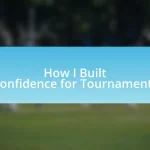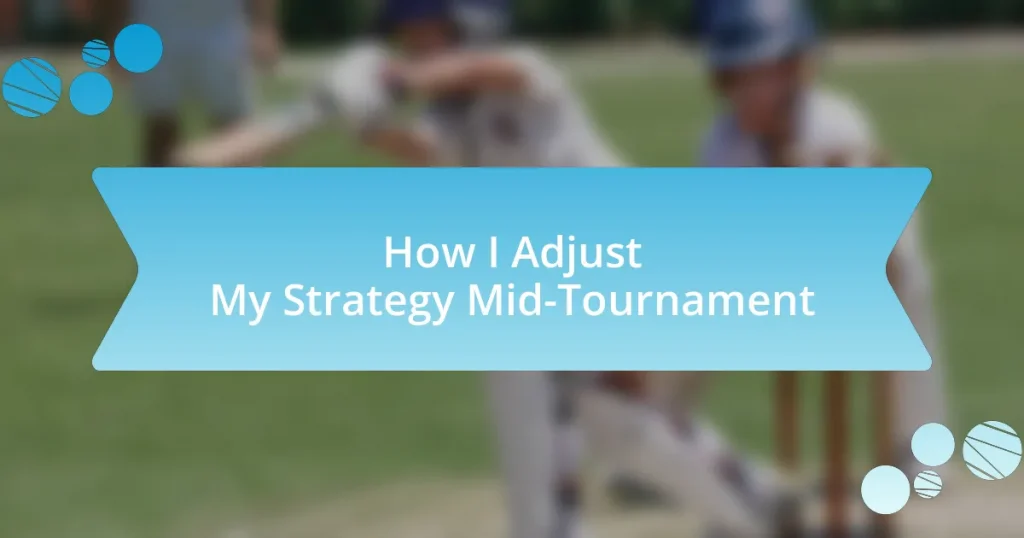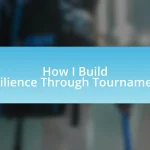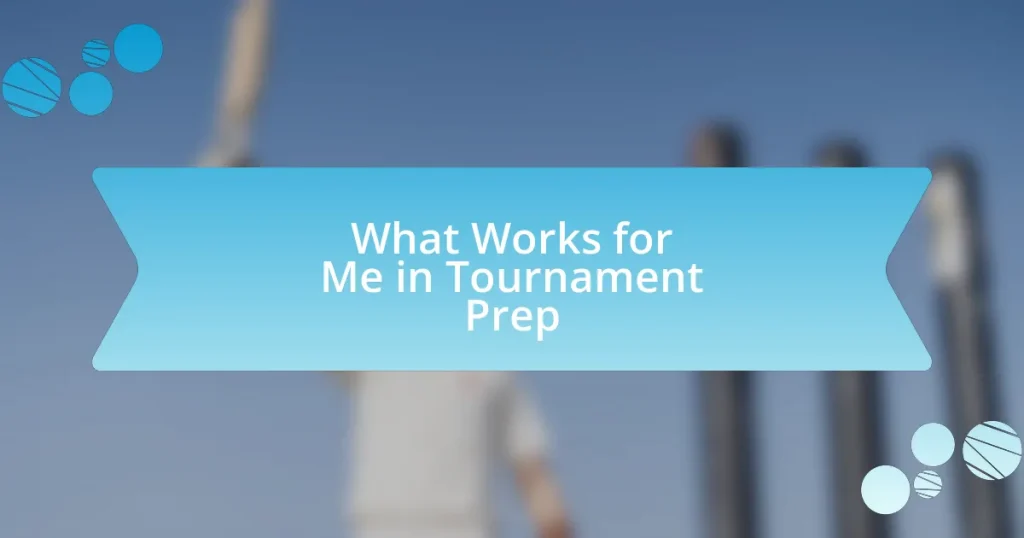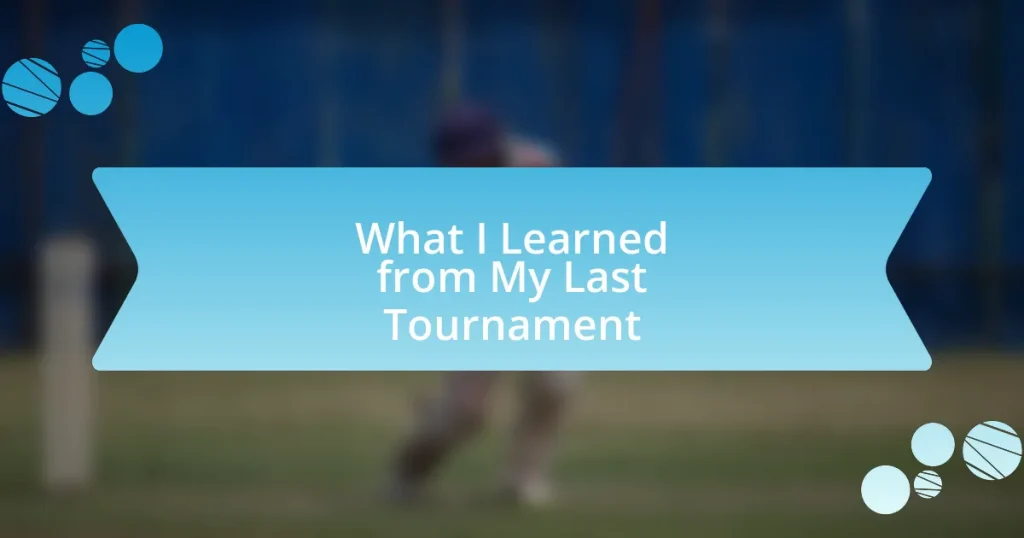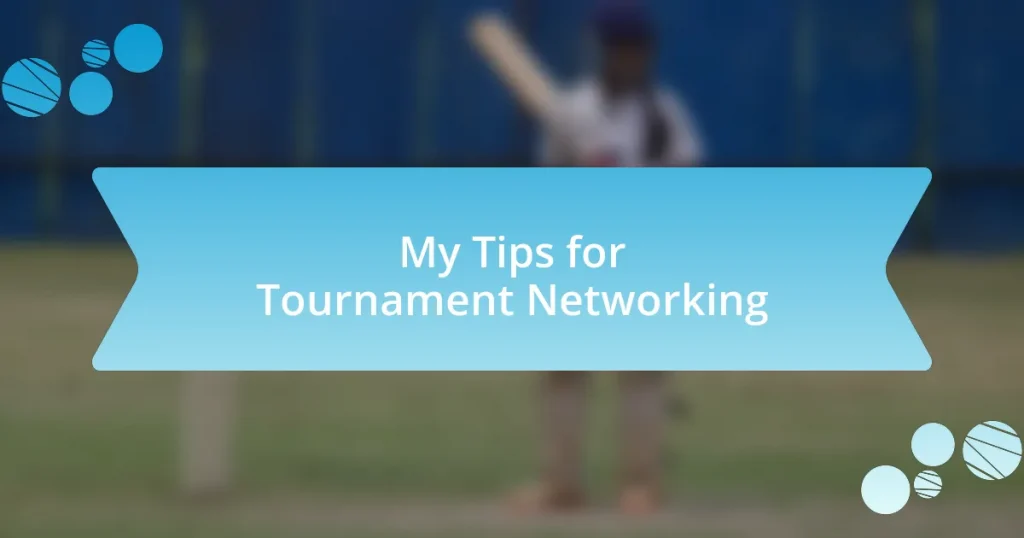Key takeaways:
- Flexibility and mental agility are crucial in adapting strategies during a tournament, allowing players to pivot based on the dynamics of the game.
- Recognizing non-verbal cues from opponents and crowd reactions can inform timely adjustments to strategy and improve performance.
- Analyzing opponent behavior patterns, including their responses under pressure and emotional cues, provides insights for making effective mid-game adjustments.
- Reflecting on past tournaments and engaging with competitors enhances learning and identifies areas for personal growth in strategic approaches.
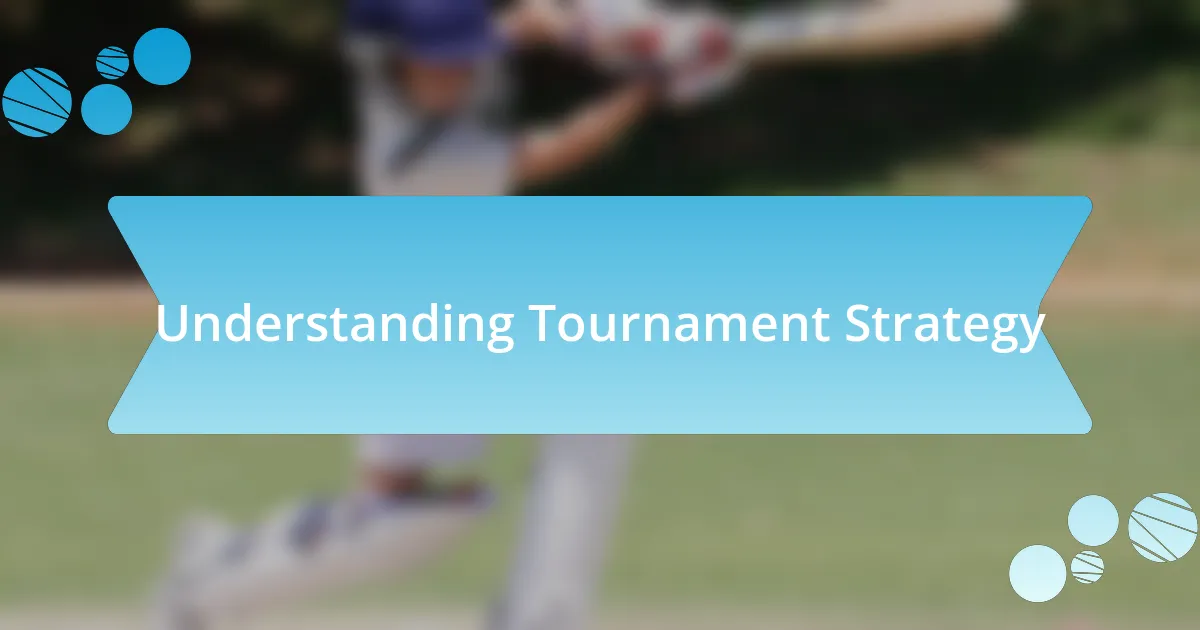
Understanding Tournament Strategy
Understanding tournament strategy goes beyond mere preparation; it’s about adapting to the dynamics as they unfold. I remember a specific moment in a recent tournament when my initial game plan fell apart after my first round. At that point, I realized that flexibility is just as crucial as having a solid foundation. Have you ever found yourself in a similar situation, wondering how to pivot when things go awry?
What often surprises me is how much mental agility influences outcomes. During one tournament, I was racing against the clock, and my opponent made an unexpected move. I had a choice: stick to my original plan or quickly assess the new threat and adjust. That split-second decision made all the difference—it helped me realize that sometimes the best strategy is embracing uncertainty and responding to the moment.
Another important aspect is understanding the mindset of your competitors. I’ve noticed that reading my opponents can provide valuable insights. For instance, I once faced an aggressive player who thrived on intimidating their challengers. I had to recalibrate my approach to not only defend but also to counterattack with confidence. Have you ever tuned in to the unspoken cues of your rivals? It can transform how you approach every match and deepen your strategic planning.
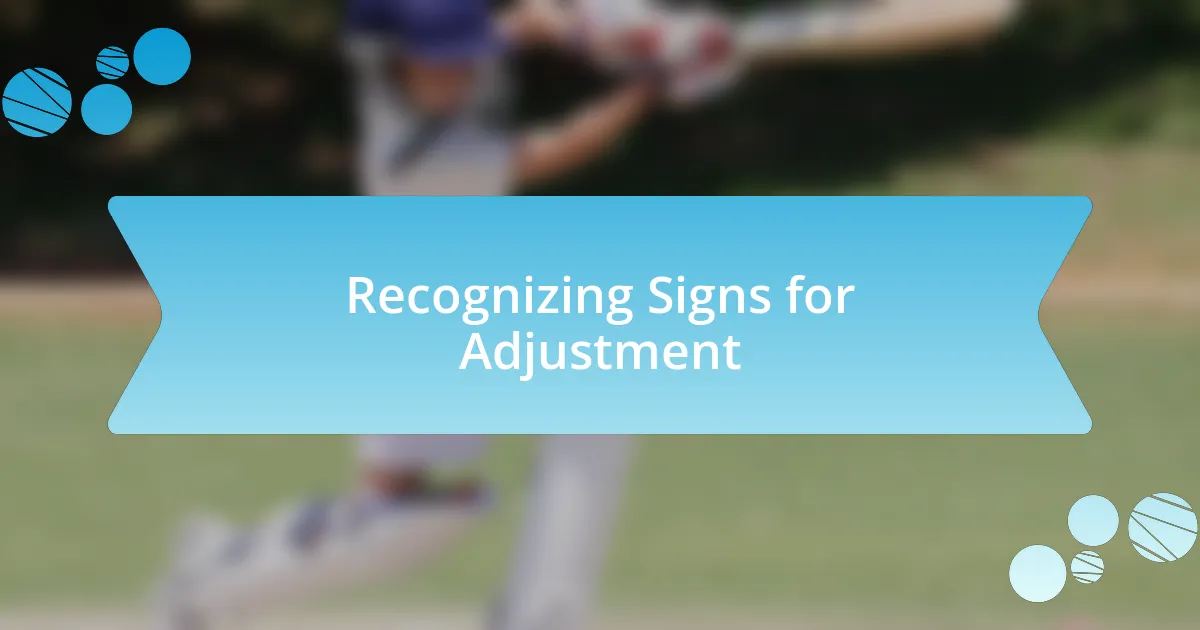
Recognizing Signs for Adjustment
Recognizing the signs for adjustment during a tournament can be a game-changer. I remember a time when I was deep into a match, and I noticed my opponent’s subtle shift in posture. It was as if they were bracing for an unexpected play. This instinctive awareness nudged me to rethink my strategy and explore new openings. Have you ever felt that tension in the air that signals something isn’t quite right?
Another signal I often recognize is when a planned move either succeeds brilliantly or flops miserably. There was a moment in a recent tournament where my usual tactic didn’t yield the expected results. The disappointment was palpable, but I quickly realized this was my cue to pivot. I learned that adjusting my strategy isn’t a sign of weakness; it’s an opportunity for growth and learning. Have you ever experienced that moment where your original plan just doesn’t land?
Additionally, I find that the energy of the crowd can also provide valuable feedback. In one particularly electrifying match, I noticed the audience’s reactions shifted according to my performance. Their enthusiasm or discouragement became a barometer for me—when cheers quieted down, I recognized that I needed to re-engage and spark excitement back into my game. How do you gauge the atmosphere around you to inform your next move?
| Signs for Adjustment | Personal Insights |
|---|---|
| Opponent’s Body Language | Noticing tension can prompt a strategic shift. |
| Outcome of Moves | A failed tactic signals a need for change. |
| Crowd Reaction | The audience’s energy can guide your next steps. |
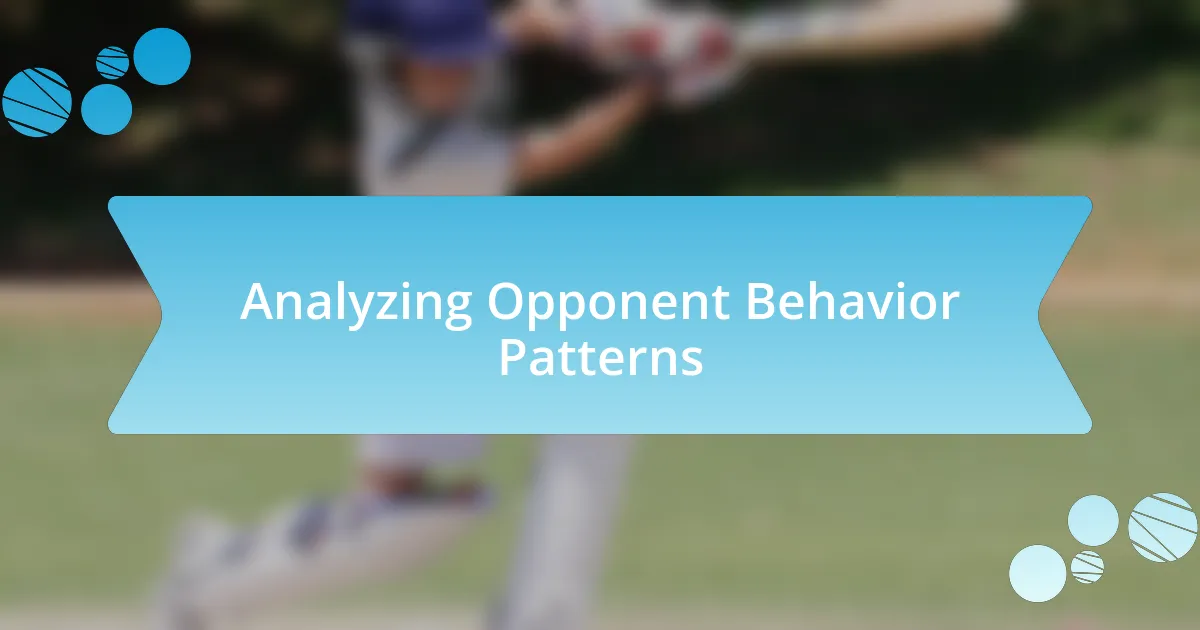
Analyzing Opponent Behavior Patterns
I often find that understanding my opponent’s behavior is crucial for mid-tournament adjustments. There was a time when I observed a consistent pattern in one competitor’s gameplay—they would hesitate before making a risky play. This moment of hesitation became an opportunity for me. Instead of sticking rigidly to my initial strategy, I adjusted to capitalize on their indecisiveness, leading to my advantage. What subtle patterns do you notice when you play against someone?
When analyzing behavior patterns, consider these key aspects:
– Response to Pressure: Does your opponent thrive under stress, or do they crack?
– Timing of Actions: Take note of when they tend to make their bold moves—are they reactive or calculated?
– Consistent Tactics: Do they favor certain strategies, giving you clues on their next steps?
– Emotional Cues: Recognizing when they display frustration or confidence can signal shifts in their approach.
By remaining attentive to these behaviors, you can carve out a more adaptive strategy, enhancing your chances of success in the tournament.
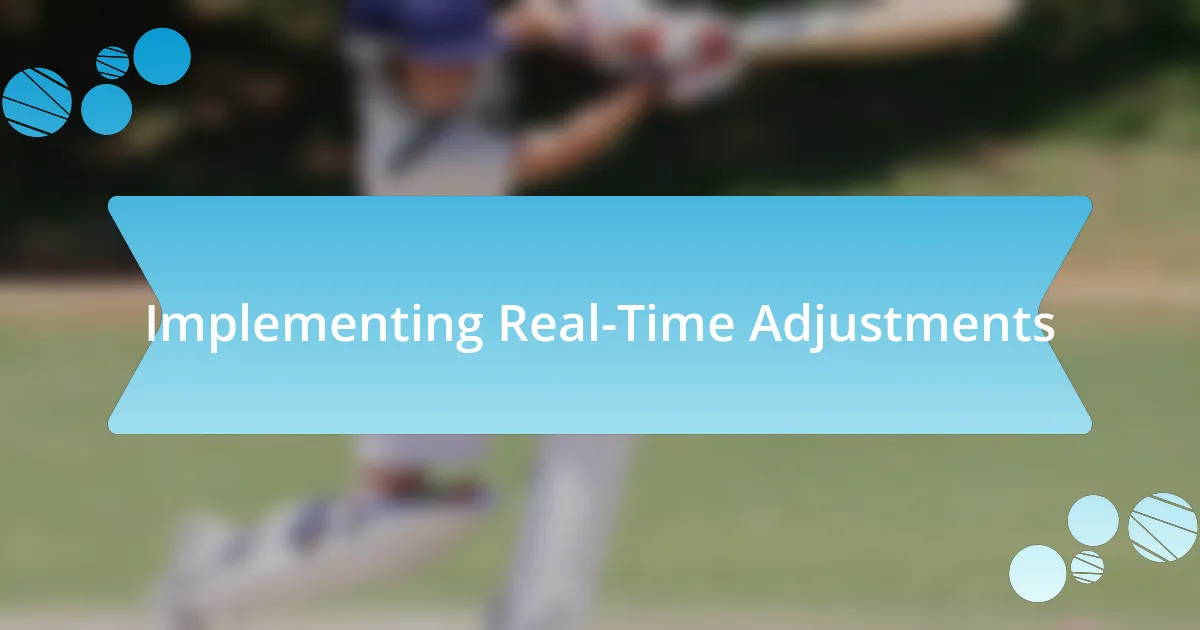
Implementing Real-Time Adjustments
Implementing real-time adjustments requires a keen awareness of the situation as it unfolds. I remember a tournament where I spotted my opponent becoming increasingly agitated after a few key plays. Each time I made a surprising move, I could see their confidence wane, which prompted me to intensify my aggression. Have you ever felt that rush of energy when you sense the tide is turning?
In those moments of heightened tension, I’ve learned that it’s crucial to shift not only my tactics but also my frame of mind. By staying calm and focused, I could draw upon different strategies that I had prepared beforehand. I find that having a mental toolkit ready allows for smoother transitions. When everything’s on the line, what strategies do you rely on to regain control?
It’s fascinating how small changes can lead to significant outcomes. I once faced an opponent who thrived on long, drawn-out games. Midway through, I switched my approach to a more aggressive, fast-paced style. This surprised my rival and fundamentally altered their game, putting me in the driver’s seat. Have you ever taken a risk that changed the entire course of a match? Embracing those pivotal moments can make all the difference.

Evaluating Impact of Changes
Evaluating the impact of changes is essential to understanding my performance and growth during a tournament. After implementing a new strategy, I actively observe my opponent’s reactions, noting shifts in their body language and decision-making. In one particular match, I altered my defensive tactics mid-game and instantly noticed my rival hesitating. It made me wonder—how often do we underestimate the power of timing in our adjustments?
I also take moments to reflect on the results of my adjustments afterward. For example, after switching to a more aggressive style, I found myself not only winning more quickly but also enjoying the game more. It struck me how these tactical shifts can reshape not just the match, but my entire mindset. Have you ever found joy in witnessing the immediate effects of an emotional or strategic pivot?
Furthermore, I make it a point to analyze the aftermath of my changes to fine-tune my approach. In a recent tournament, I evaluated my performance in terms of speed and adaptability. Even a slight tweak to my initial strategy revealed areas for improvement I’d previously overlooked. This process has fostered a deeper understanding of how each decision impacts the overall outcome. What have you discovered about your strategy by examining the aftermath of your decisions?
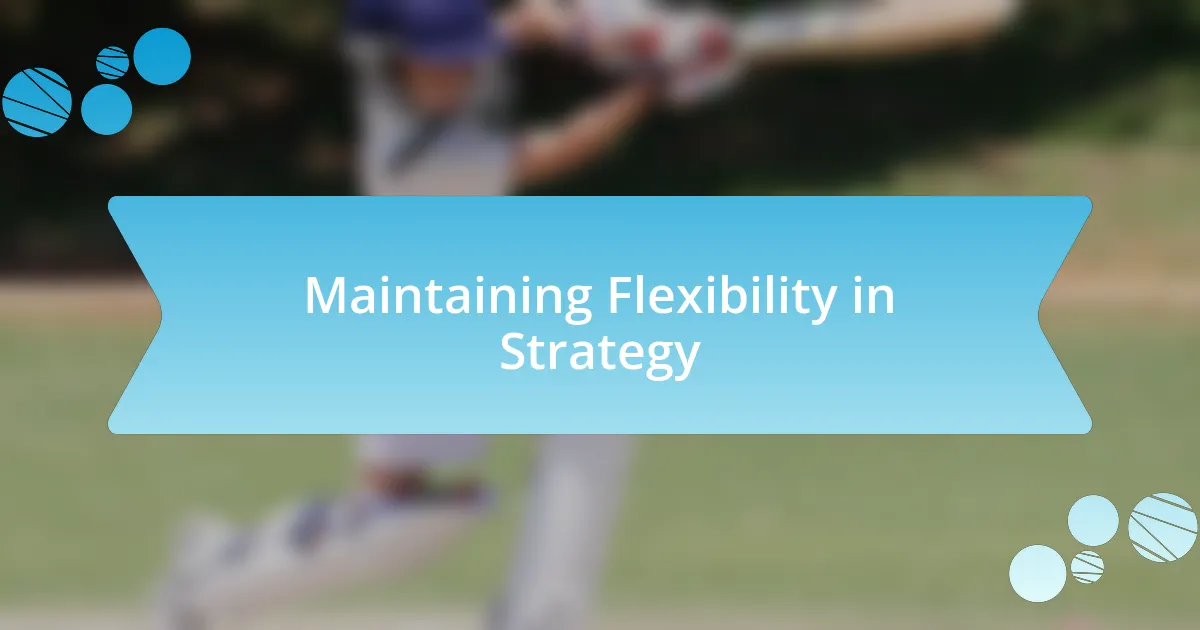
Maintaining Flexibility in Strategy
Maintaining flexibility in strategy is crucial during a tournament. I’ve learned that being rigid can lead to missed opportunities. For instance, in one match, I noticed my opponent adapting quickly to my approach, which made me realize I needed to switch things up. I changed my game plan on the fly and ended up catching them off-guard. Isn’t it interesting how a small shift in mindset can lead to significant advantages?
I also strive to keep an open mind about my tactics. There was a time when I refused to abandon a strategy that hadn’t been working. I was proud and a bit stubborn, thinking I could force it to succeed. Ultimately, though, embracing flexibility enabled me to experiment with new techniques, leading to a surprising victory. Have you ever felt stuck in a strategy that just wasn’t working?
In addition, I remind myself that my opponents are human too, and they might be just as unsure as I am. During one intense matchup, I sensed my competitor was grappling with their own strategy. By adapting mine, I not only gained the upper hand, but their uncertainty became palpable. It left me wondering—how often do we allow our perceptions of our rivals to inform our strategic decisions?
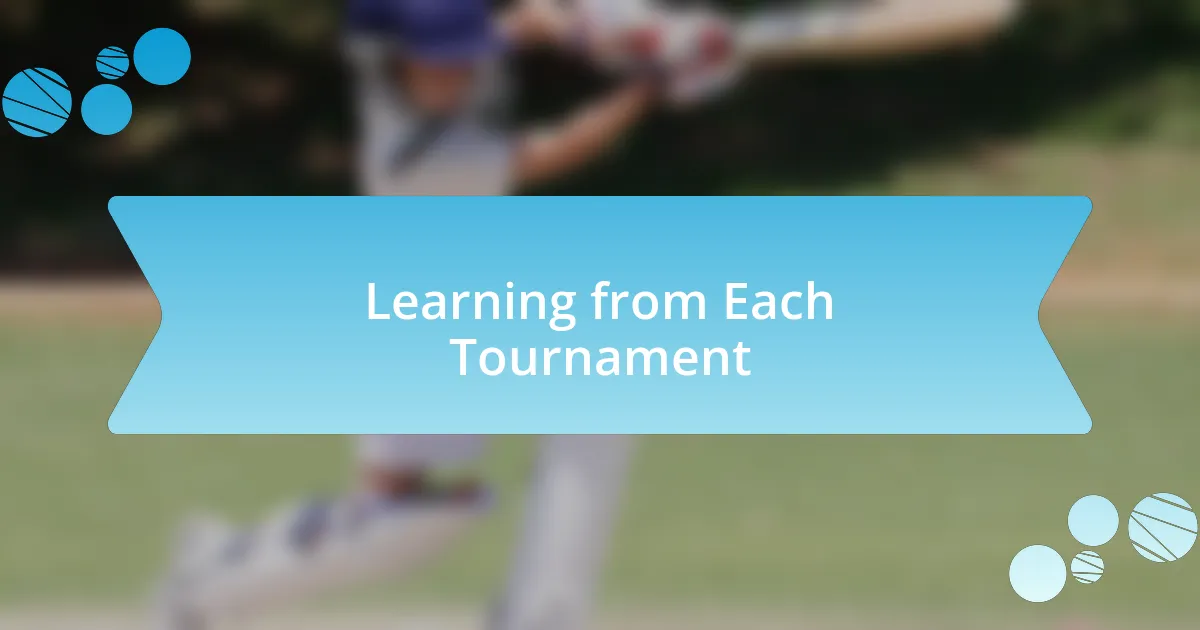
Learning from Each Tournament
Learning from each tournament pushes me to refine my approach continuously. In one particular tournament, after each match, I took a moment to jot down key observations and feelings. I realized that reflecting on not just the technical aspects but also my emotional highs and lows helped me identify patterns in my decisions that I could adjust in future games. Isn’t it intriguing how our emotions can be just as informative as our strategies?
As I look back, I remember a time when I faced a remarkably challenging opponent who seemed unbeatable. Instead of being discouraged, I focused on what made their strategy effective. Analyzing their play style post-match allowed me to recognize weaknesses I could exploit next time. Have you ever found that dissecting a loss can be more valuable than celebrating a win?
Engagement with fellow competitors has also enriched my learning experience. After one tournament, I joined a casual discussion with others about our respective strategies. It was enlightening to hear about their thought processes, and I realized how much knowledge I could gain from different perspectives. Those conversations fueled my growth, making me ponder—how often do we share our insights to uplift others while enhancing our own game?



